11 Top Azure Announcements From Microsoft Inspire 2021
CRN breaks down the new Microsoft Azure products, features and services unveiled by the No. 2 cloud computing provider at its annual partner conference.
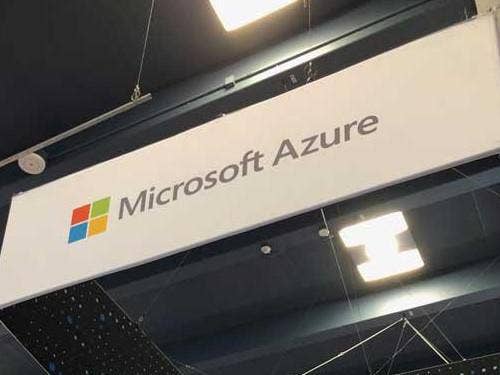
A new Microsoft Cloud for Sustainability, additional Azure Stack HCI features and an Azure Migrate App Containerization update are among the top Azure announcements coming from the No. 2 cloud provider at its annual Microsoft Inspire 2021 partner conference that starts today.
Azure API Management integration with Azure Event Grid, smart defaults for Azure Kubernetes Service (AKS) and a new partner center in Azure Synapse that will connect customers to partner solutions also are among the products, features and services being unveiled to help drive growth among Microsoft’s 400,000 partners and their customers.
“Microsoft is committed to equipping partners around the world with the most innovative technologies, tools and solutions in the industry,” Nick Parker, Microsoft’s corporate vice president of global partner solutions, said in a blog post. “We continually strive to be the best partner for our partners’ growth and profitability, offering unique opportunities to leverage the Microsoft cloud, create differentiated solutions on our platform and got to market together at scale.”
Microsoft is hosting its partner conference virtually instead of in person for the second straight year due to coronavirus concerns. Here’s a look at 11 of the top Azure announcements from the two-day event.

Microsoft Cloud For Sustainability
Microsoft will launch the Microsoft Cloud for Sustainability later this year in preview to help the cloud provider and its customers meet their carbon reduction and sustainability goals.
The new cloud will allow organizations to record, report and reduce their carbon footprint as they work toward net-zero emissions. It will enable customers to invest in sustainable practices and partner with experts to accelerate progress toward their carbon reduction and sustainability goals.
The new offering responds to demand from investors, customers and legislators for more commitment, accountability and measurement of carbon reduction efforts within organizations, according to Microsoft.
Measuring the overall environmental impact of an organization is particularly challenging, said Judson Althoff (pictured), Microsoft’s executive vice president and chief commercial officer.
“Organizations need to be able to record their environmental footprint, report to stakeholders, reduce their resource usage, remove their footprint through carbon offsets or recycling, and replace high-footprint resources with low-footprint ones,” Althoff said in a blog post. “But doing this effectively means moving away from manually inputting data into spreadsheets and toward a more seamless data flow via data connectors that provide automated, accurate, real-time data — and, ultimately, turn those data-driven insights into action. That is where Microsoft Cloud for Sustainability comes in.”
The new offering is built on Microsoft technologies including Azure, Microsoft Dataverse, Power Platform and Power BI. Microsoft will look to its partner ecosystem to build specialized, industry-specific applications, data sources and emissions data connectors.
Microsoft previously announced separate, industry-specific Microsoft clouds for retail, healthcare, manufacturing, financial services and nonprofits.
“These industry clouds are an aggregation of our solution areas represented as vertical expressions of the Microsoft Cloud,” Althoff said. “ With Cloud for Sustainability, we’re creating a whole new category, going beyond capturing data to helping customers aggregate sustainability data in an actionable way. It includes SaaS offerings that can discover and connect to real-time data sources, accelerate data integration and reporting, provide accurate carbon accounting, measure performance against goals and enable intelligent insights for organizations to take more effective action.”
Chief information officers using the new cloud will be able to easily report on IT carbon emissions from the cloud, devices and applications as part of their departments’ environmental footprint and connect their emissions data sources into one view for reporting. Companies will be able to offer their customers a sustainability scorecard to track progress against their carbon emission reduction goals. Customers also will be able to pinpoint specific emission areas and track if they are meeting their emission reduction goals.
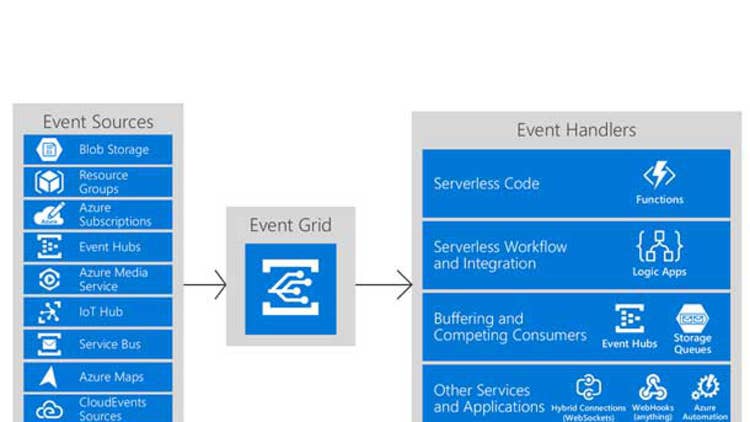
Azure API Management Integration With Azure Event Grid
In preview, Azure API Management integration with Azure Event Grid allows customers to configure API Management to publish events to Event Grid when a new user or new subscription is created on an API Management resource.
Azure API Management is used to create consistent and modern API gateways for existing back-end services. Azure Event Grid is a single service for managing routing of events from source to destination with near real-time notifications, allowing users to easily build applications with event-based architectures by subscribing to events and then taking action when the subscribed event is received.
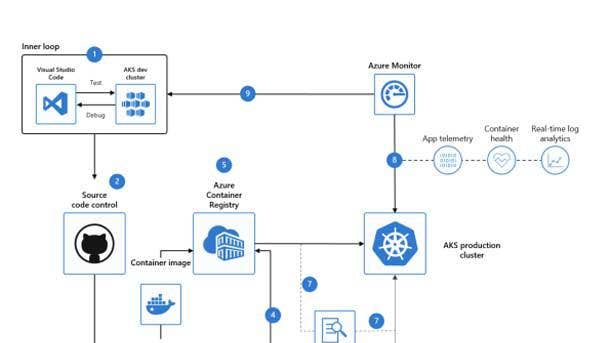
Azure Event Grid Integration With Azure Kubernetes Service
AKS as an event source for Azure Event Grid now is in preview.
AKS simplifies deploying a managed Kubernetes cluster in Microsoft Azure by offloading the operational overhead to Azure. To automate AKS operations, customers now can subscribe to AKS events for a new Kubernetes version upgrade availability and a new node image version upgrade availability. Users choose the Azure resource to which they want to subscribe, provide an event handler or WebHook endpoint, and then take action when the subscribed event occurs.
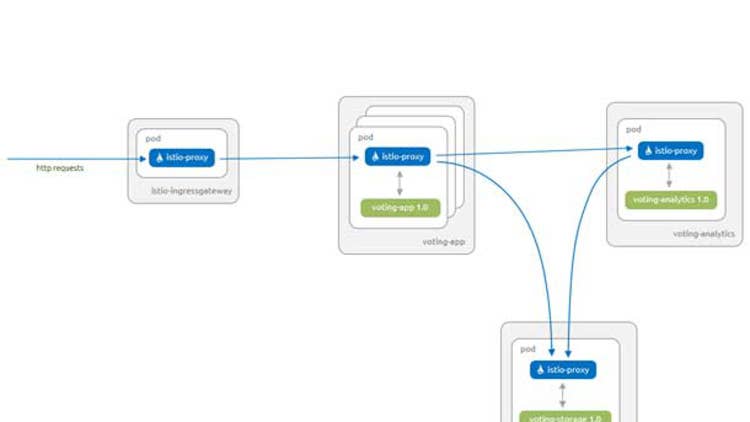
Smart Defaults For AKS
New smart defaults for AKS that simplify and expedite configuration now are in preview.
Smart defaults are scenario-specific cluster configurations that can be applied in a single click to help customers avoid common pitfalls in setup and operations, and get going quickly. They also save customers time that they otherwise would spend navigating through documentation and testing different settings.
Customers can pick from dev/test, cost-optimized, batch processing and hardened cluster access scenarios, and can quickly apply preset configurations for node pool size, auto-scaling, availability zones, Azure Monitor and Azure Policy that are specific to these scenarios, according to Microsoft.
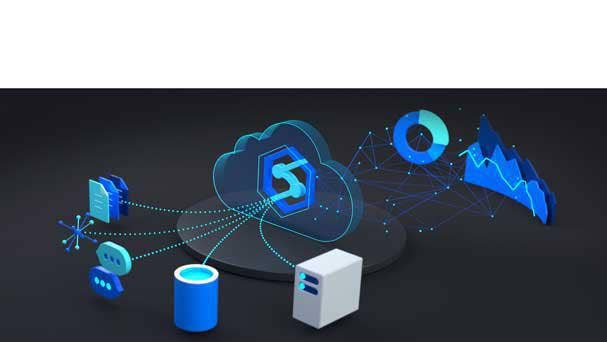
New Partner Center In Azure Synapse
Azure Synapse ecosystem partners now can include their solutions directly in a new partner center that’s accessed from Azure Synapse Studio.
Azure Synapse is an enterprise analytics service that accelerates time to insight across data warehouses and big data systems. Azure Synapse Studio provides a workspace for data prep, data management, data exploration, data warehousing, big data and AI tasks.
The new partner center allows Azure Synapse customers to browse and research partner solutions, connect to the partner service through an API and automatically start a trial. The capability is available to all users performing analytics projects with a Synapse workspace, allowing them to also explore adding independent software vendor (ISV) solutions to their analytics. Trials can be implemented directly from the Synapse Studio, allowing customers to quickly test ISV solutions.
Customers now can enact the experience in the Synapse Studio for Incorta, Informatica, Fivetran, Precisely and Qlik Data Integration.
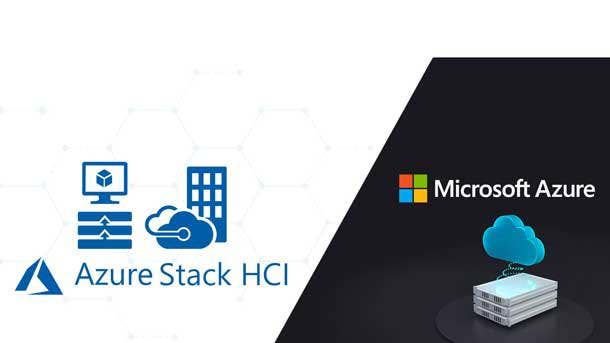
Azure Stack HCI Updates
Microsoft has introduced more product features for Azure Stack HCI, its cloud-connected, hyperconverged infrastructure cluster solution that uses validated hardware to run virtualized workloads on-premises. The features include simplified guest licensing activation and enhanced infrastructure security.
Azure Stack HCI now supports Hyper-V’s Automatic Virtual Machine Activation (AVMA) feature for Windows Server. Customers with existing Windows Server 2019 Datacenter edition activation keys can enter them directly into the Azure Stack HCI host using the Windows Admin Center or PowerShell. Virtual machines (VMs) running Windows Server automatically will inherit activation from the host, so product keys for each VM don’t need to be managed separately.
“Azure Stack HCI helps customers modernize datacenters with a hybrid solution of hyperconverged infrastructure tightly integrated with Azure,” said JG Chirapurath, vice president of Azure data and AI. “It is now possible to simplify guest licensing activation with Automatic Virtual Machine Activation. And with secured-core server, customers benefit from advanced protection with defense-in-depth protection over multiple layers across hardware, firmware and OS.”
Secured-core server, which is available for Azure Stack HCI, is becoming a required component for HCI-integrated systems. Secured-core server simplifies security enablement at the server level by resecuring hardware, firmware and operating system capabilities to help protect against threats. It proactively disrupts practical attack vectors, according to Microsoft.
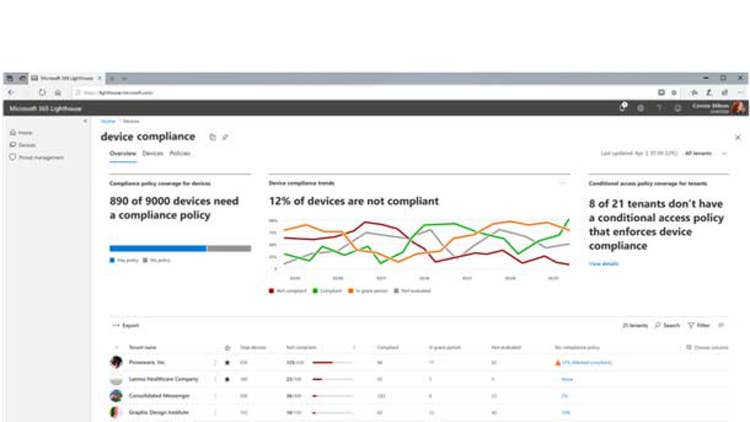
Managing Azure Arc-Enabled SQL Server With Azure Lighthouse
Azure SQL — a family of managed, secure and intelligent products that use the SQL Server database engine in the Azure cloud – will be generally available on July 30 as an Azure Arc-enabled resource to be managed with Azure Lighthouse, joining Windows Server, Linux and Kubernetes.
“This enables customers to consistently manage their hybrid SQL Server environments during and after the move — on their terms,” Tanuj Bansal, Microsoft’s senior director of Azure product marketing, said in a blog post. “Azure Arc now integrates with Azure Lighthouse, giving partners additional opportunity to manage resources across edge, datacenter and multi-cloud environments.”
Azure Lighthouse enables cross- and multi-tenant management, allowing for higher automation, scalability and enhanced governance across resources and tenants. Partners already using it to manage multiple customer data services across environments will see increased control and agility with Azure Arc-enabled Azure SQL, according to Microsoft.
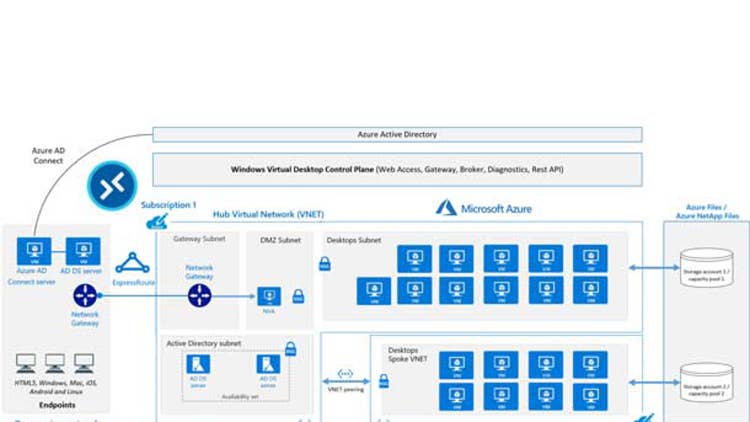
New Azure Virtual Desktop Pricing Coming
Microsoft will introduce a new monthly, per-user access pricing option for Azure Virtual Desktop aimed at helping ISVs secure new business opportunities as they deliver apps from the cloud to customers and business partners, and expand their SaaS businesses. Azure Virtual Desktop is a desktop and app virtualization service that runs on the cloud.
The new pricing option takes effect on Jan. 1, 2022, but Microsoft is offering free promotional access through Dec. 31, 2021, for streaming first- or third-party apps to external users. Organizations must continue to pay for the underlying Azure infrastructure.

Azure Migration And Modernization Program
Microsoft is expanding programs and extending security updates to support cloud migration and modernization.
The Azure Migration and Modernization Program (AMMP), previously called the Azure Migration Program, now covers more migration and modernization offerings across apps, infrastructure and data, including support for Azure Arc, a set of technologies that brings Azure’s cloud management capabilities and services to virtually any environment.
“Azure Arc is key to our approach to helping customers operate hybrid seamlessly,” Chirapurath said. “Enabled by Azure Arc, customers can also bring Azure services to any existing infrastructure including other clouds to take advantage of Azure’s benefits anywhere. This includes running managed databases like Azure SQL and Azure Postgres on the infrastructure of your choice, as well as extending machine learning to the edge in order to run models close to where the data lives.”
Microsoft also is expanding AMMP with new support for Azure Spring Cloud and Azure Cosmos DB.
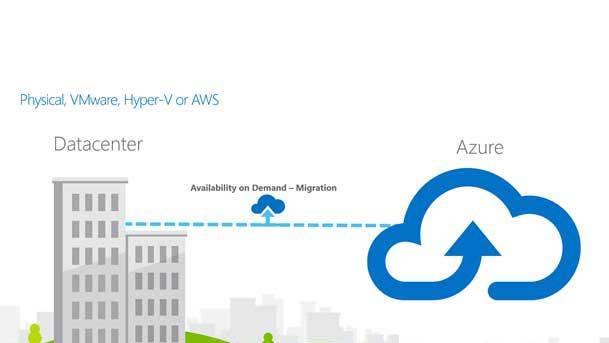
Azure Migrate App Containerization Update
App Containerization, a new feature of Azure Migrate that went into public preview in March, helps modernize existing ASP.NET and Java web apps by packaging them as containers and deploying the containerized apps to AKS. It augments existing Azure Migrate features such as the migration of servers to Azure VMs and migration of SQL databases to Azure SQL.
Azure Migrate App Containerization now supports deploying containerized apps to the Azure App Service’s Web App for Containers, which makes it easier to deploy and run
containerized applications on Windows and Linux.
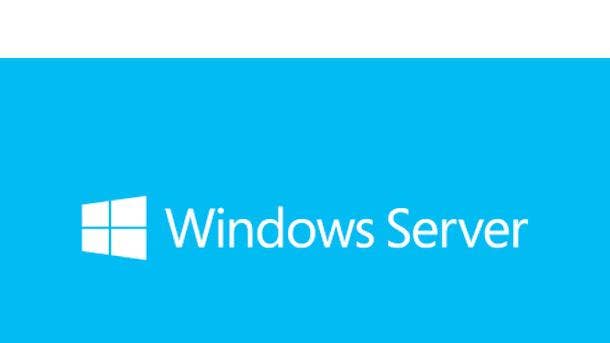
Windows Server 2012/R2 And SQL Server 2012 ESUs
Microsoft is extending free extended security updates (ESUs) for Windows Server 2012/R2 and SQL Server 2012 for on-premises customers who want to migrate to and modernize on Azure.
Windows Server 2012 and 2012 R2 extended support will end October 10, 2023, while SQL Server 2012 extended support ends July 12, 2022. Customers unable to meet those deadlines can protect their apps and data running on those releases for an additional three years if they migrate to Windows Server and SQL Server on Azure and take advantage of the free ESUs on Azure. Customers running those releases on-premises will have the option to purchase ESUs.
Customers can take advantage of Azure-only capabilities and ease operational burden while modernizing Windows Server and SQL Server environments, Bansal said.
“Azure Automanage improves workload performance and uptime through simplified management for Windows Server and Linux VMs,” Bansal said. “Azure VMware Solutions allows customers to migrate quickly while continuing to take advantage of their VMware investments. Azure Virtual Desktop helps customers modernize their Windows Server Remote desktop services-based virtual desktop infrastructure environments. Similarly, SQL Server IaaS Agent extension delivers automated management, patching and backups for SQL Server on Azure VMs.”
Windows Server and SQL Server 2008 and 2008 R2 three-year ESUs will end Jan. 10, 2023, and July 12, 2022, respectively. Customers requiring more time to migrate and modernize will be able to take advantage of a Windows Server and SQL Server 2008 and 2008 R2 security update extension for Azure for one additional year, according to Microsoft.